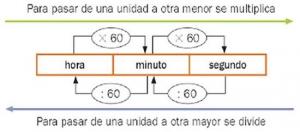What is the ACCELERATION of a body and its formula

When we talk about displacement of a body, In general, we always refer to their speed of displacement, however an important concept when defining the displacement of bodies is that of acceleration. The acceleration of a body is a physical magnitude that indicates the variation of speed with respect to time and it is adequate to know it for many purposes.
In this lesson from a TEACHER we define what is acceleration and its formula. If you want to find out, we will explain it to you in the following article!
In physics, the acceleration of a body is a quantity that has a direction as well as the speed of an object (vector magnitude) and indicates the variation of speed experienced by a body in its displacement as a function of the time spent on it. To represent the acceleration of an object we do it by means of the letter a and in the International System its units of measurement are the meter per second squared (m / s2).
There is another unit of acceleration, the cegesimal system of units or CGS, much less used, called
Gal in honor of Galileo. A measurement that arises from applying the centimeter instead of the meter as a measure of distances. In this system, a body undergoes an acceleration of 1 Gal if in one second it goes from rest to moving at a speed of 1 cm / s. Therefore, 1 Gal equals 1cm / s2 = 0.01 m / s2.Isaac Newton and acceleration
The concept of acceleration has its origin in the postulates on the mechanics of Isaac Newton, who was one of the founders of it, and tells us that any object or body will always keep a straight and uniform, as long as there is no other force on it that leads to its acceleration, or its trajectory to curve.
Therefore, a moving object or body can only change its speed if a force acts on it that leads to its acceleration. Since we are talking about vector quantities that have a direction, this speed will increase if the force that is apply it is directed in the same direction as the displacement direction, in which case we speak of acceleration positive. On the contrary, the speed will decrease if the applied force is directed in the opposite direction to that of displacement and, in this case, we speak of negative acceleration.
In classical mechanics acceleration is defined as the variation (both by increase and decrease) of the velocity in the displacement of a body per unit of time and its mathematical formula is expressed as follows:
a = dv / dt
Where to expresses acceleration, dv is the difference or variation of speed and dt is the time difference in which the displacement takes place.
If we decompose the formula a little more to see it more clearly, we are left with:
dv = vf - vi, where vf represents the velocity of the object at the end of its motion and vi is the velocity at the initial moment. This expression is the one that indicates the direction of the acceleration, there may be a positive acceleration (the object gains speed with time) and a negative acceleration (the object loses speed with the weather).
dt = tf -ti, where tf represents the end time of the displacement and ti is the time at which the displacement starts and, unless otherwise stated, it is always 0.

Another concept within mechanics that affects the acceleration of a body of a given and constant mass (m) is that there is a proportional relationship between the force applied to it (F) and the acceleration applied to it (a) which is expressed according to the following equation:
F = m. to
This formula is valid for any reference system and allows us to obtain another derived formula:
a = F / m
Which is the formula that expresses Newton's second law or fundamental law of dynamics, which tells us that any object accelerates if a force is applied to it.

Image: Wikihow
To finish understanding this lesson about what acceleration is and its formula, here are some examples of acceleration in day to day:
- Two children are swinging on a swing. The first child swings with little force and his acceleration is less, while the second one does it with more force and reaches a greater acceleration.
- We have two boxes: one of 15 kg and the other of 50. If we apply the same force to both boxes, the 15 force will reach greater acceleration. If what we want is for the two to reach the same speed, we should apply more force to the 50 kg box.
- If we have a tennis ball and a soccer ball and we kick them with the same force, the tennis ball will reach greater acceleration than the soccer ball, since its mass is less.
- When a car stops in the middle of the road and is pushed manually by the driver, its acceleration will be less than if several people are pushing the car.



